Meet you at the airport then go on into downtown for the first Moroccan country-side view. Visit to Hassan II Masjid (not possible on Fridays or religious holidays), the largest mosque in Africa which is decorated with beautiful tiling of the utmost craftsmanship. The last visit is at about 14.00 regarding the queue for tickets so it may only be possible to visit the exterior. Continue Rabat the capital, to spend the night in a riad.
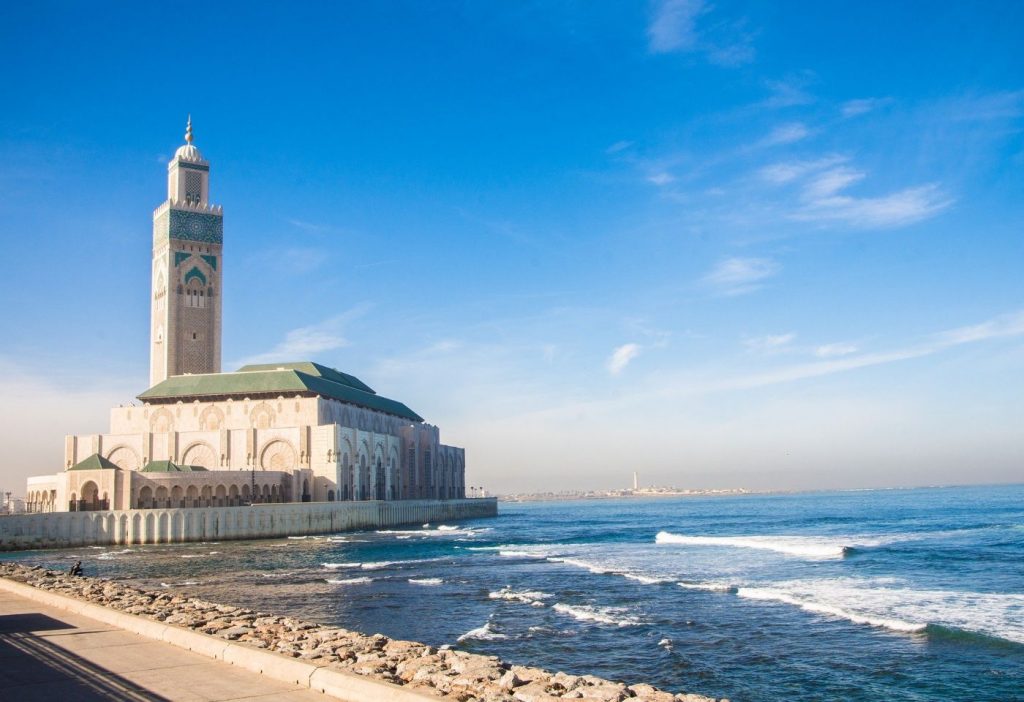
After the breakfast we will have a look at the Hassan Tower and the Mausoleum of Mohammed V, built an esteem to the king, who passed away in 1961 and for Hassan II his son, who died in 1999 and who is also entombed here. On our way Fes and in the north of Meknes we will stop to visit Volubilis the Roman ruins, which are expand over a large area and provide beautiful views over the valley and hills. Arrival to fes diner and the overnight in a Riad.
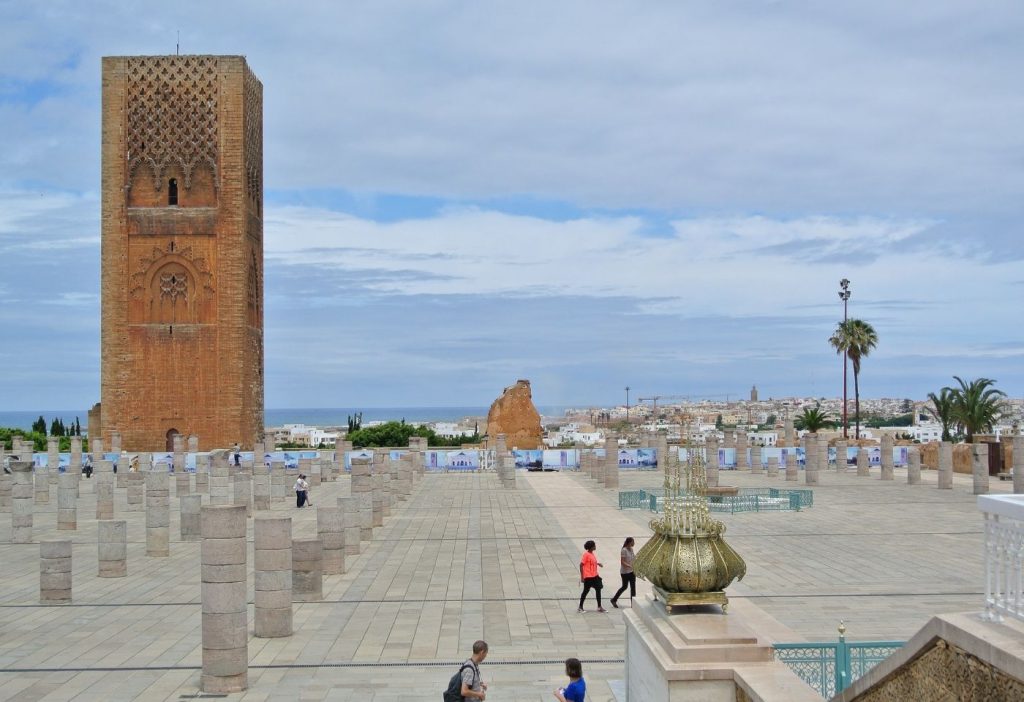
Enjoy a full day sightseeing tour in Fes which is the oldest of Morocco’s four “Imperial Cities”. The medieval city of Fes El Bali, or “Old Fes” remains complete and is unspoiled. During your tour of this part of the town, you can visit the exotic Bou Inania Medersa, the Medina and the Kairaouine Mosque, where you may take photos of the wonderful courtyard from the main gate as well as the famous soukhs. In the afternoon you can visit Fes El Jdid, or “New Fes” and the Museum of Moroccan Arts. The night is spent in the riad.
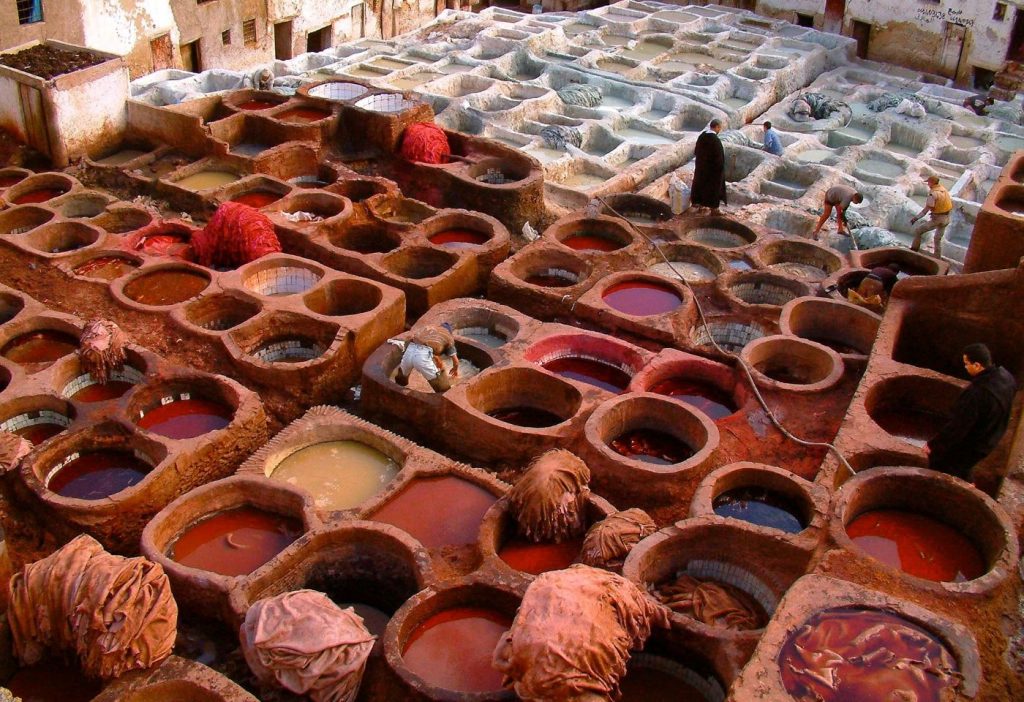
Departure from Fes at 8 o’clock, travelling via Azrou, where you can see Barbary apes in the cedar forest of the Middle Atlas. Lunch is in Midelt, “the apple capital”, at the foot of the Ayachi Mountain. We continue over the Tizi-n-Talremt pass and through the Ziz Valley, which is particularly well-known for its palm trees and the length of the oasis. All along the road there are innumerable “ksars”, small villages of individual houses. From here we reach Er Rachidia and then Erfoud, famous for its date festival and fossils. Once you reach the bivouac in Erg Chebbi, you will be greeted with a glass of tea and have time to wander the dunes before the sunset. Dinner is served and followed by an evening of music and the night in a nomad tent.
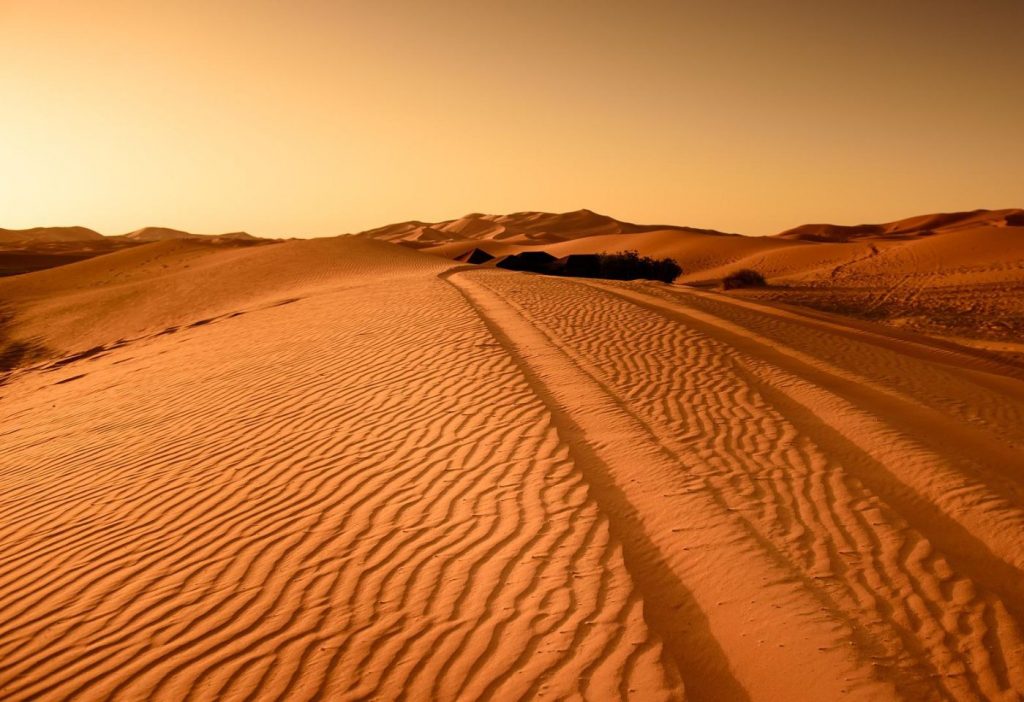
After breakfast, you take the camels, either riding or walking behind, as they carry everything needed to cook your lunch, which will be prepared out in the dunes by your camel man. You’ll walk about three hours in the morning, followed by another three in the afternoon returning to the bivouac for dinner and the night.
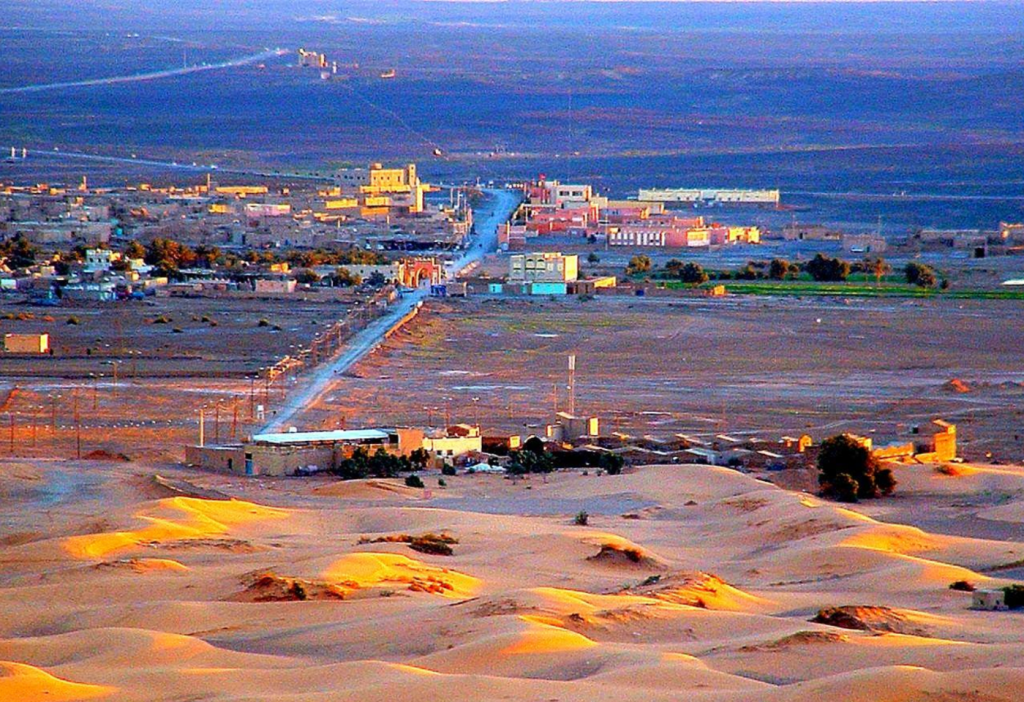
You will get up early enough, in order to watch the spectacle of the sunrise, when the colour of the dunes and the play of shadows are an awesome sight. After breakfast you can have a camel ride for a couple of hours (or less; it depends on you) before leaving for Tinghir and the Toudgha gorges for lunch. The road passes through Tinjdad and the Toudgha Valley. Here there are plenty of opportunities to walk, such as along the river through the gardens or up the road on the other side of the gorges. Later the itinerary continues to the Dades Valley and the Dades Gorges for the night in a hotel.
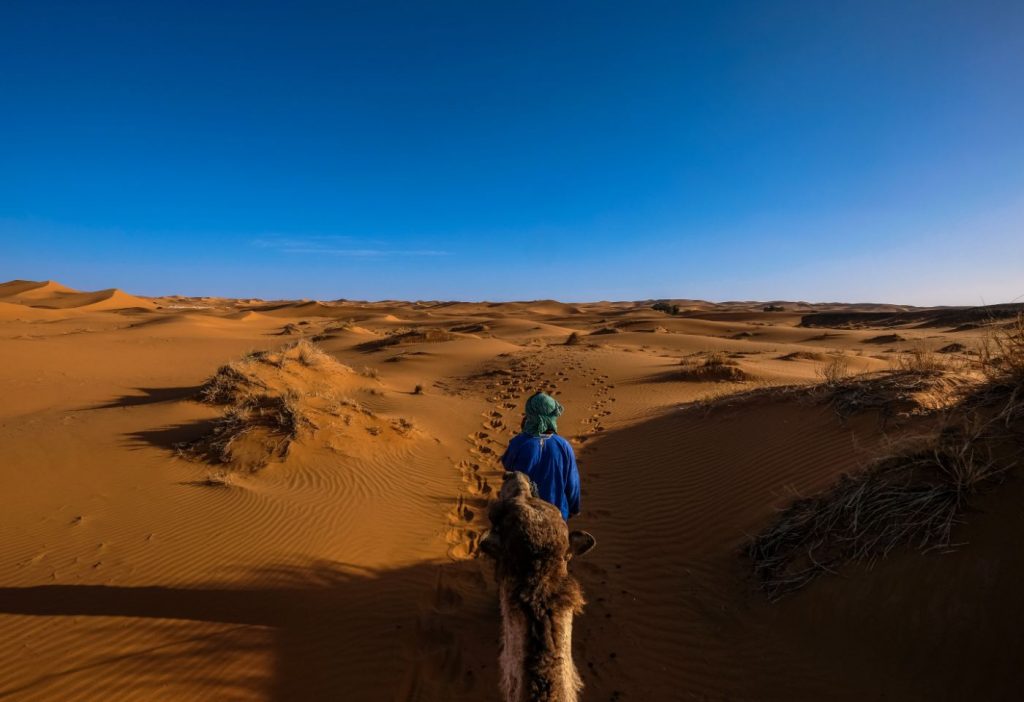
After breakfast a walk in the Dades Gorges is scheduled. Back at the car, the trip to Ouarzazate continues, going off-road along the Boutarar piste to visit Berber nomads in their caves and partake of a glass of tea with them. From here we continue through the Valley of the Roses, famous for its Rose Festival in May, and where highly valued oils, creams and soups are produced. You reach the kasbahs of Skoura, the most well-known of which is Kasbah Amredil which you will stop to visit. Once in Ouarzazate you will stay in a riad or guest house.
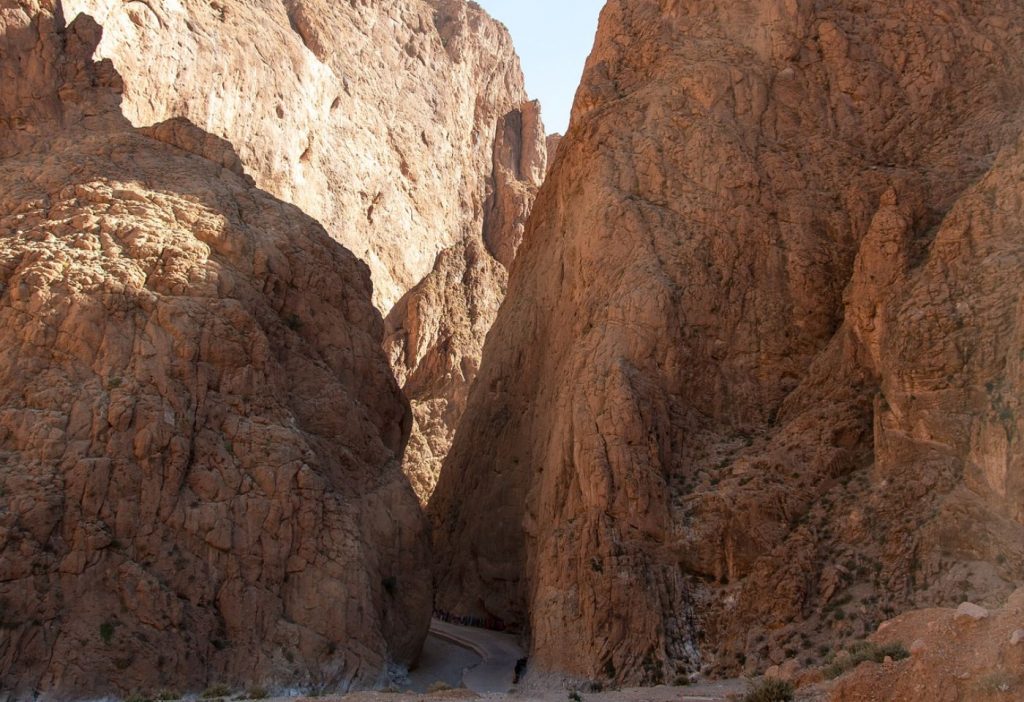
After breakfast, the route goes on to Kasbah Ait Ben Haddou, a World Heritage site and the backdrop for many Hollywood blockbusters such as the Kingdom of Heaven and the Gladiator. It is the most famous Kasbah in Morocco and one of the most visited spots in the whole country. From there the road continues to Telouet, along the recently asphalted road high above the beautiful green valley below. Telouet is set right in the midst of the mountains and was once the seat of the last Pasha of Marrakesh, El Glaoui, from where the highest pass in Africa, Tizi-n-Tichka was controlled. At the end of the afternoon we arrive in Marrakesh, having crossed this highest pass in North Africa.
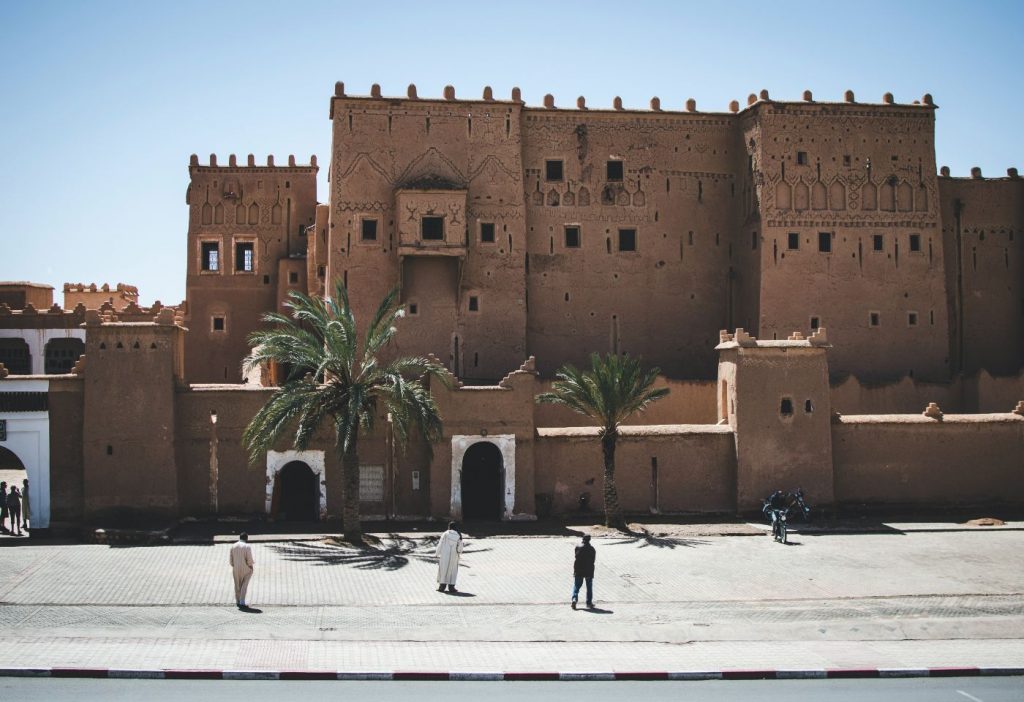
Marrakech is probably best known for central Djemma El Fna with its juice stalls, dried fruit and nut stalls, women applying henna, snake charmers, story sellers and the myriad of nightly food stalls. You will visit the following places according to time and inclination: the Majorelle Gardens which belonged to Yves St Laurent and is famous for its special shade of blue, the Koutoubia Mosque, El Bahia Palace which means “the palace of the beautiful”, the Qoranic School, the Ben Youssef Medersa which used to house some 80 Qoranic students and the Saadian Tombs. You spend another night in your riad.
Instead of the walking tour of Marrakesh, we could organize a cooking class for Moroccan cuisine. This would add an extra fee.
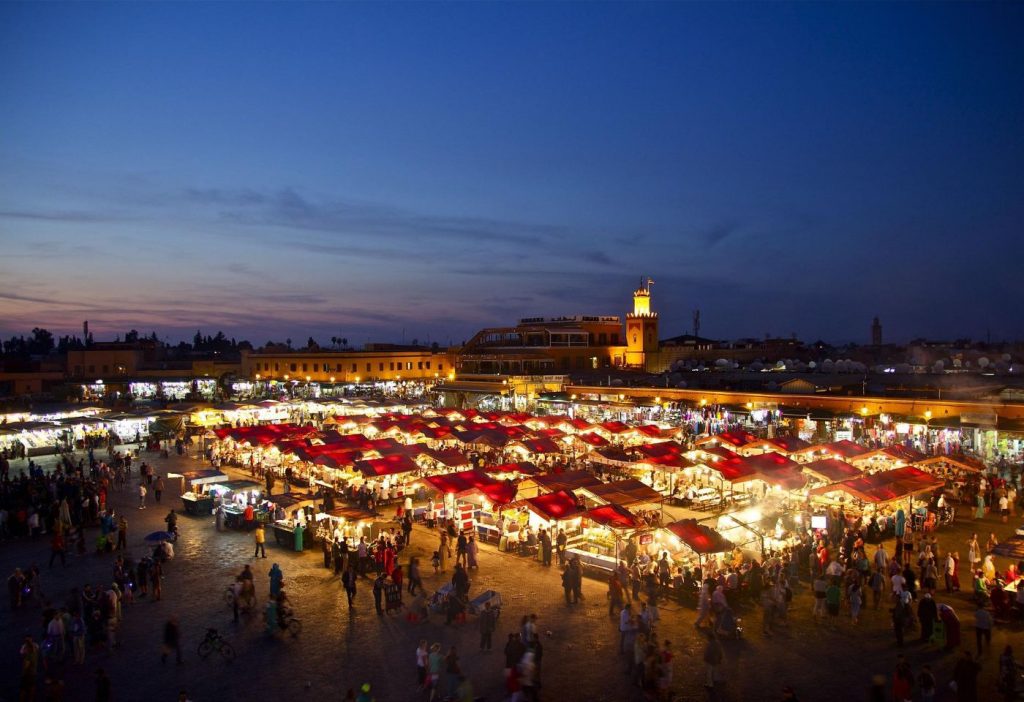
Essaouira is many tourists’ darling! Previously known as Mogador to the Portuguese inhabitants, it is a charming small town on the coast well- known for local handicrafts, especially thuja wood furniture, carving and small artefacts, sold in innumerable shops along the windy streets.
Orson Wells filmed “Othello” here, making especially the Portuguese ramparts famous in its opening scene. Visit the women’s cooperative where argane nuts are processed by hand into one of the most versatile oils; delicious in salads and a treat for the skin.
At the sea front, the customer chooses a selection of freshly caught fish to have prepared on the spot. The surfing opportunities and the beach make it an ideal spot for coastal lovers. Essaouira has a favourable micro-climate; mild in winter and cool in summer.
This is a truly favourite place to chill after a trip to the desert – on the beach, in the little cafés by the port or wandering in and out of all the little shops. The nights are spent in a riad in the town.
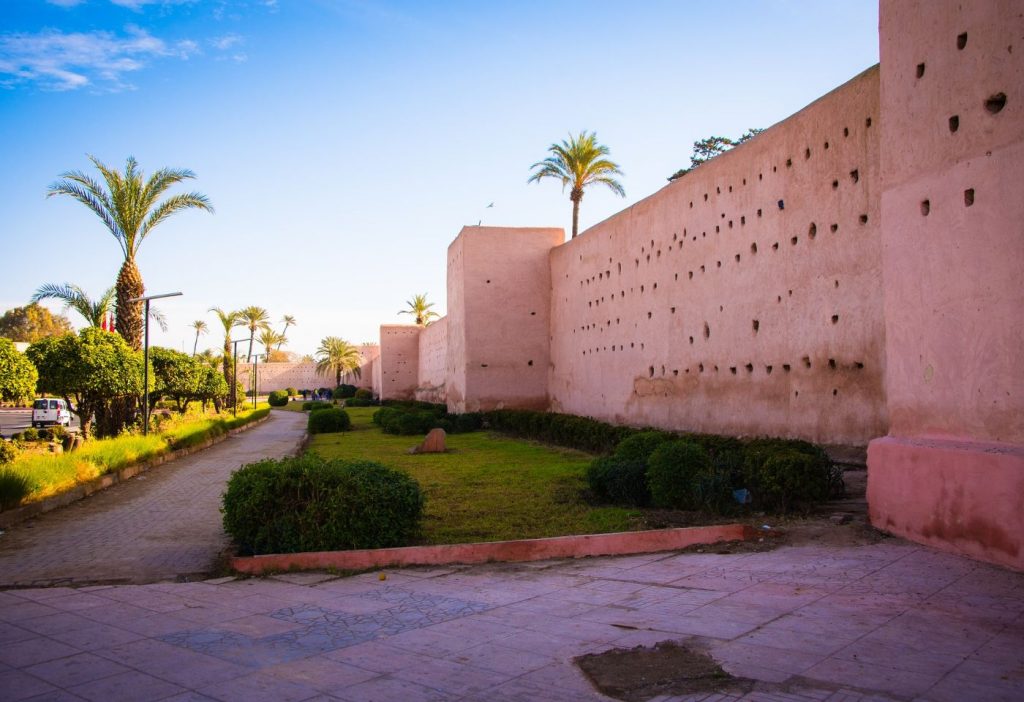
After breakfast the journey back to the airport in Casablanca starts (about a five hour drive). On the way we can stop in El Jadida to visit the Portuguese cistern and the old Portuguese town surrounding it. We continue north along the coast road north past Azemmour or Azamor (from the Berber: Azmmur or Azemmur « the olive »; Portuguese: Azamor) a small ancient town on the left bank of the Oum Er-Rbia River.
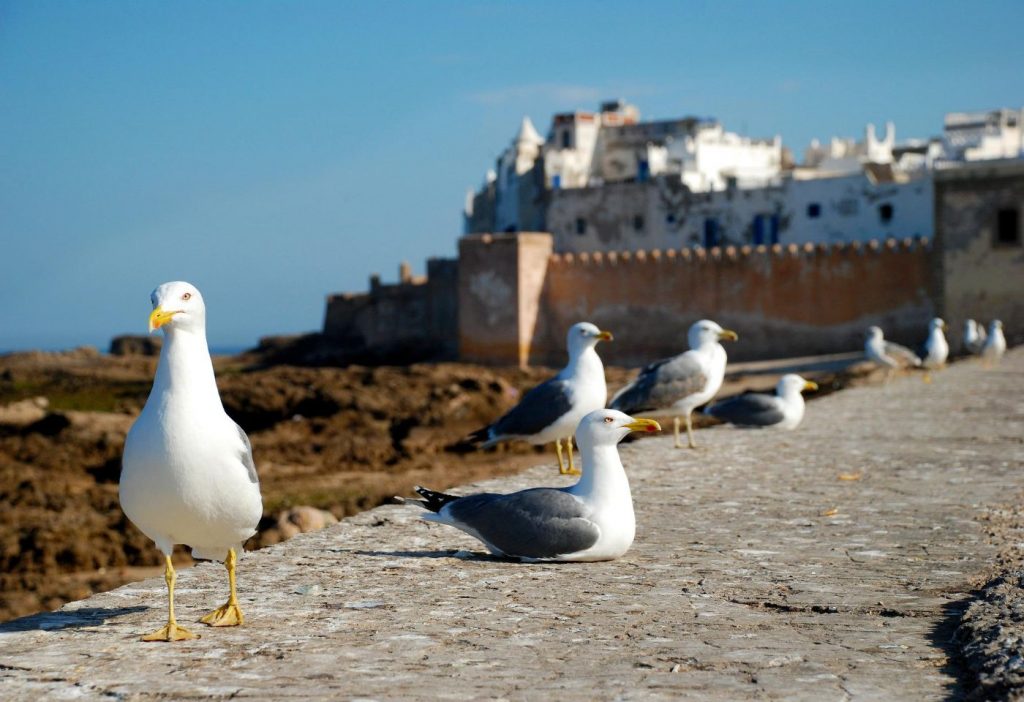
+212 666 147 204
+212 675 552 688
contact@alipok-tours.com
Tajda, Tarmegt, Ouarzazate